Best DSLR or Mirrorless Camera for Streaming & Online Recording in 2025
I started using a proper mirrorless camera as my webcam over a year ago now, and I've never looked back. It's soooo useful being able to record top-quality video right from my normal office chair. I can go from answering emails, to video idea lightbulb, to recording in mere seconds. And as for video podcast recordings, live streams or even just standard online calls, fuhgeddaboudit! So cool having that level of quality in everything I do. But what's the best DSLR or mirrorless camera for streaming or online recording right now? Well, as usual, there's a bit of "it depends". But let's take a look at a range of DSLRs and mirrorless cameras, right here, and see what might suit your budget.
The Simple Difference Between DSLR and Mirrorless
First, which kind of 'proper' camera are you looking for? Here's the fundamental difference:
- DSLR cameras have a mirror inside that bounces light up to an optical viewfinder, letting you see exactly what the lens sees. Press the shutter, and that mirror flips up (creating that classic "click" sound), letting light hit the sensor to capture your image.
- Mirrorless cameras skip the middleman. Light passes straight from the lens to the digital sensor, which creates a preview on an electronic viewfinder or the rear screen. No mirror means no mechanical flip when you take a shot.
It's like the difference between watching a movie through a periscope (DSLR) versus watching it directly on a screen (mirrorless). Both show you the film, but the experience is different.
Why Content Creators Are Leaning Toward Mirrorless
The market has seen many content creators make the switch to mirrorless over the past few years, and for good reason:
- Silent operation: No more distracting "ka-chunk" sounds while recording
- What you see is what you get: The screen shows your actual exposure, white balance, and depth of field in real-time
- Superior video autofocus: Most mirrorless cameras nail focus while recording far better than DSLRs
- Content creator features: Flip screens, streaming capabilities, and vlogging modes
- Compact and lightweight: Easier to handle during long shooting sessions
When I upgraded to use a pro camera as my webcam last year, these benefits were what finally pushed me over the edge to upgrade from my old Nikon DSLR.
Before you rush off to sell your DSLR, though, here's a few thoughts:
- Price advantage: You can often get more camera for your money with DSLRs
- Battery life: DSLRs typically last longer between charges (crucial for lengthy streams if you're running off the battery - but you probably shouldn't!)
- Longer Established ecosystem: Tons of compatible lenses and accessories
Alrighty, now that we've figured out the difference, let's take a look at some of the best options out there when it comes to creator cameras.
Entry-Level Options
Canon EOS Rebel SL3 (EOS 250D)
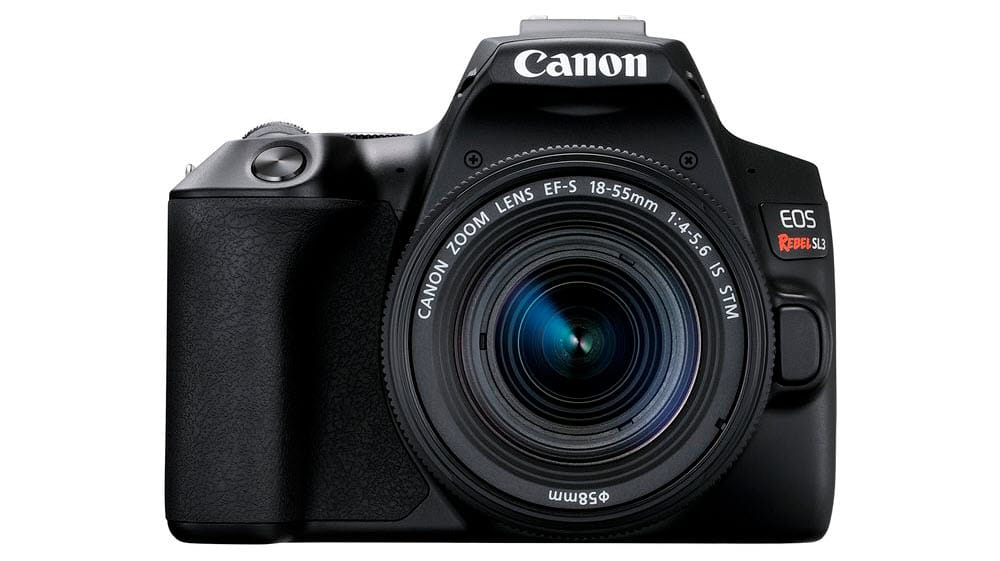
Summary:
- Price: ~$700
- Sensor: 24MP APS-C
- Video: 4K
- Clean HDMI: Yes
- Type: DSLR
- Pros: Compact, vari-angle touchscreen, Dual Pixel AF, clean HDMI output
- Cons: Limited 4K features, plastic build
For beginners looking to step up their webcam game, the Canon EOS Rebel SL3 offers an excellent starting point. This compact DSLR boasts a 24MP APS-C sensor and 4K video recording capabilities. Its Dual Pixel autofocus system with 3,975 focus points ensures your streams stay sharp, while the vari-angle touchscreen allows for easy self-recording if you get into a bit of Vlogging too. The clean HDMI output is a bonus for streamers looking for professional-quality live feeds without the bother of figuring out USB input.
Sony ZV-E10 II
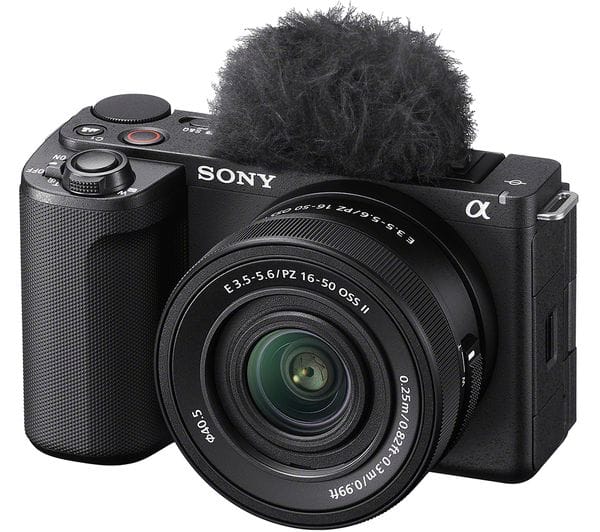
Summary:
- Price: ~$800
- Sensor: 26MP APS-C
- Video: 4K/60p, 10-bit 4:2:2
- Clean HDMI: Yes
- Type: Mirrorless
- Pros: Designed for vloggers, excellent autofocus, built-in directional mic, clean HDMI output
- Cons: No in-body stabilization, limited touchscreen functionality
For those who prefer mirrorless systems, the Sony ZV-E10 II is a brilliant choice. It's specifically designed for content creators. Its 26MP APS-C sensor captures stunning 4K video at up to 60fps, and features like-real-time Eye AF. A directional microphone is built in too, for rough and ready vlogging, although you'll most likely have your own external mic for streaming or podcasting purposes. The clean HDMI output ensures high-quality webcam and live streaming capabilities.
Sony A6100
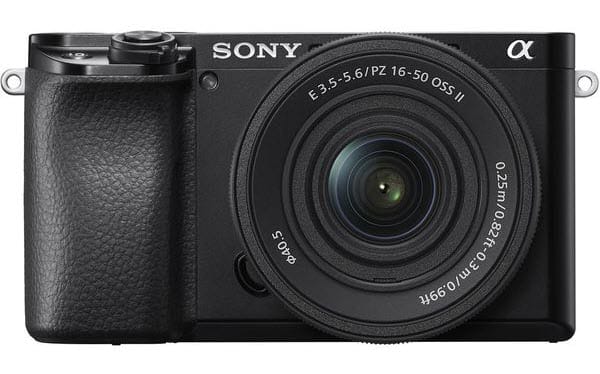
Summary:
- Price: ~$750 (body only)
- Sensor: 24.2MP APS-C CMOS
- Video: 4K/30p, 1080p/120p
- Clean HDMI: Yes
- Type: Mirrorless
- Pros: Excellent autofocus, compact size, 4K video, tilting touchscreen, good low-light performance
- Cons: No in-body image stabilization, lower resolution EVF, plastic build
For streamers, the Sony A6100 offers a bunch of compelling features. Its 4K video capability and excellent autofocus system ensure high-quality, sharp footage even in dynamic shooting situations. The clean HDMI output is great, allowing for direct high-quality video feed to streaming setups or external recorders without on-screen information.
The camera's compact size and lightweight body make it ideal for mobile streaming setups, while its tilting screen aids in self-recording if you go off-tripod. The A6100's combination of image quality, autofocus performance, and clean HDMI output make it a strong contender for streamers looking for a capable, budget-friendly camera.
Mid-Range Cameras
Nikon D7500
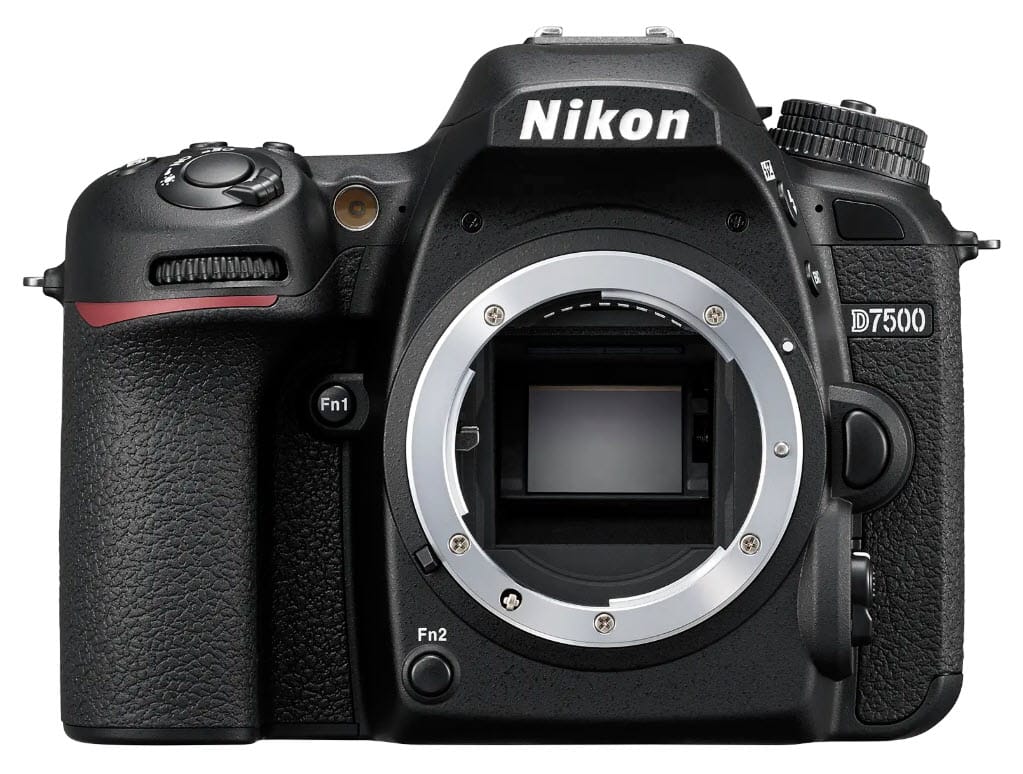
Summary:
- Price: ~$1,250
- Sensor: 20.9MP APS-C CMOS
- Video: 4K/30p, 1080p/60p
- Clean HDMI: Yes
- Type: DSLR
- Pros: Excellent image quality, 8 fps continuous shooting, 4K video, weather-sealed body, tilting touchscreen
- Cons: Single SD card slot, 1.5x crop for 4K video
The Nikon D7500 offers a significant step up from entry-level DSLRs, inheriting many features from its higher-end sibling, the D500. Its 20.9MP APS-C sensor delivers excellent image quality with very little noise throughout its ISO 100-51200 range. The camera can shoot at 8 fps for up to 50 RAW frames in a burst, which means you can take it out once in a while and get some great action shots.
For our online recording needs, the D7500 can record 4K UHD video at up to 30 fps, though with a 1.5x crop factor. It also offers clean HDMI output for external recording, as well as microphone and headphone jacks for extra audio options. The tilting touchscreen adds versatility for shooting from different angles.
Canon EOS 90D
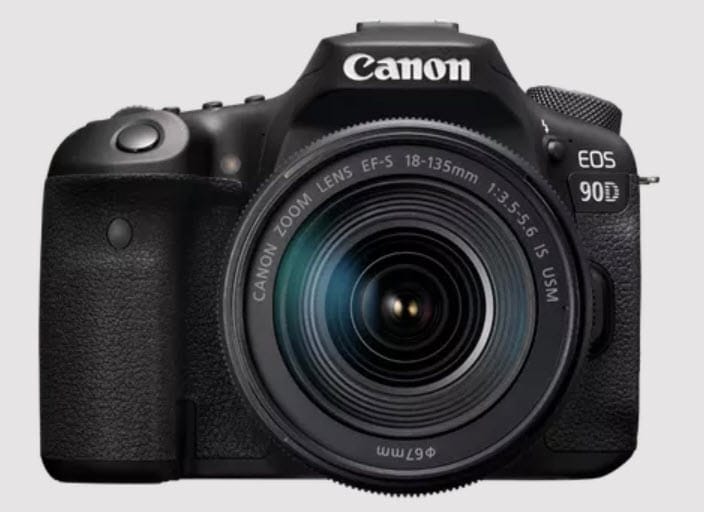
Summary:
- Price: ~$1,299
- Sensor: 32.5MP APS-C
- Video: 4K/30p uncropped
- Clean HDMI: Yes
- Type: DSLR
- Pros: High-resolution sensor, fast burst shooting, weather-sealed body, clean HDMI output
- Cons: No in-body stabilization, bulky for a crop sensor camera
Another one in the mid-range, the Canon EOS 90D offers a significant upgrade from it's little Rebel brother above. Its 32.5MP APS-C sensor and uncropped 4K video at 30fps provide exceptional quality for both stills and video. The fast Dual Pixel autofocus with Eye Detection ensures you stay in focus during your streams. The clean HDMI output is perfect for professional streaming and podcasting setups.
High-End Professional Options
Sony A7 IV
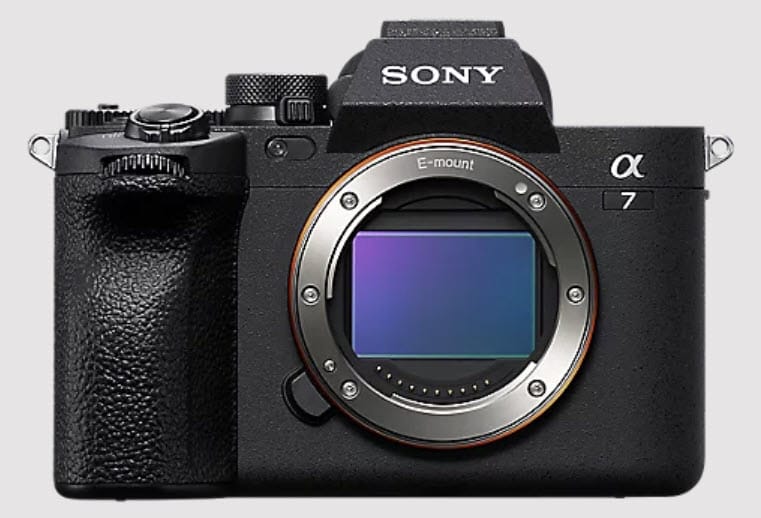
Summary:
- Price: ~$2,500
- Sensor: 33MP full-frame
- Video: 4K/60p, 10-bit 4:2:2
- Clean HDMI: Yes
- Type: Mirrorless
- Pros: Excellent image quality, advanced AF, versatile for photo and video, clean HDMI output
- Cons: Expensive, complex menu system
For those ready to invest in a full-frame system (explanation for what this means below!), the Sony A7 IV is hard to beat. It features a 33MP sensor and can record 4K video at up to 60fps. Its advanced autofocus system and versatile video features make it suitable for professional-grade streaming, podcasting and YouTube creation. The clean HDMI output ensures top-notch streaming quality.
Nikon D850
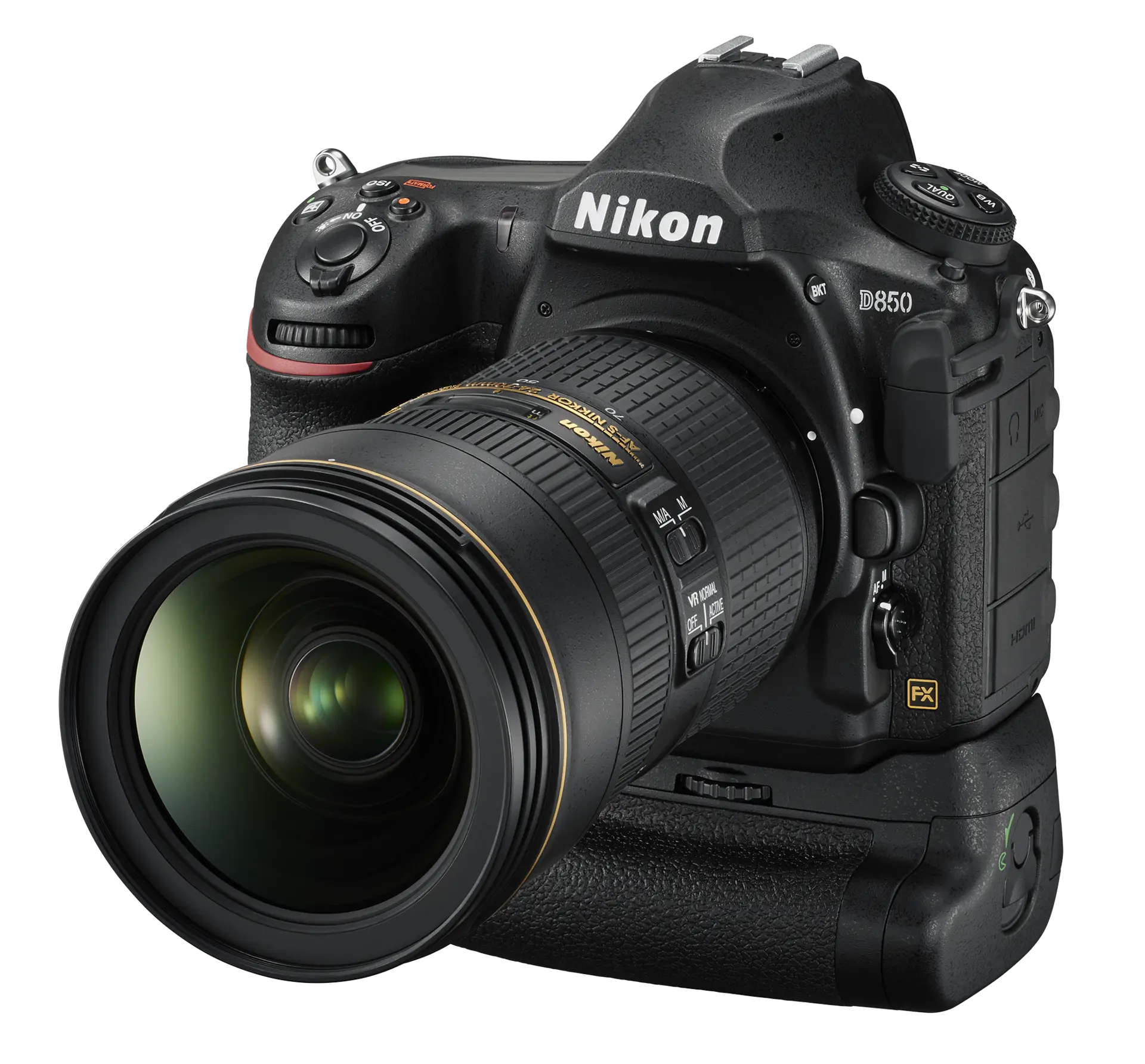
Summary:
- Price: ~$2,500
- Sensor: 45.7MP full-frame
- Video: 4K/30p
- Clean HDMI: Yes (4:2:2 8-bit)
- Type: DSLR
- Pros: Exceptional image quality, robust build, great battery life, clean HDMI output
- Cons: Heavy, expensive, no articulating screen
The Nikon D850 is a powerhouse for those seeking top-shelf quality. It offers a 45.7MP full-frame sensor with stunning low-light performance. Its ability to record full-frame 4K video with clean HDMI output (4:2:2 8-bit) makes it ideal for professional streamers and videographers who demand the highest quality.
Sony PXW-Z200
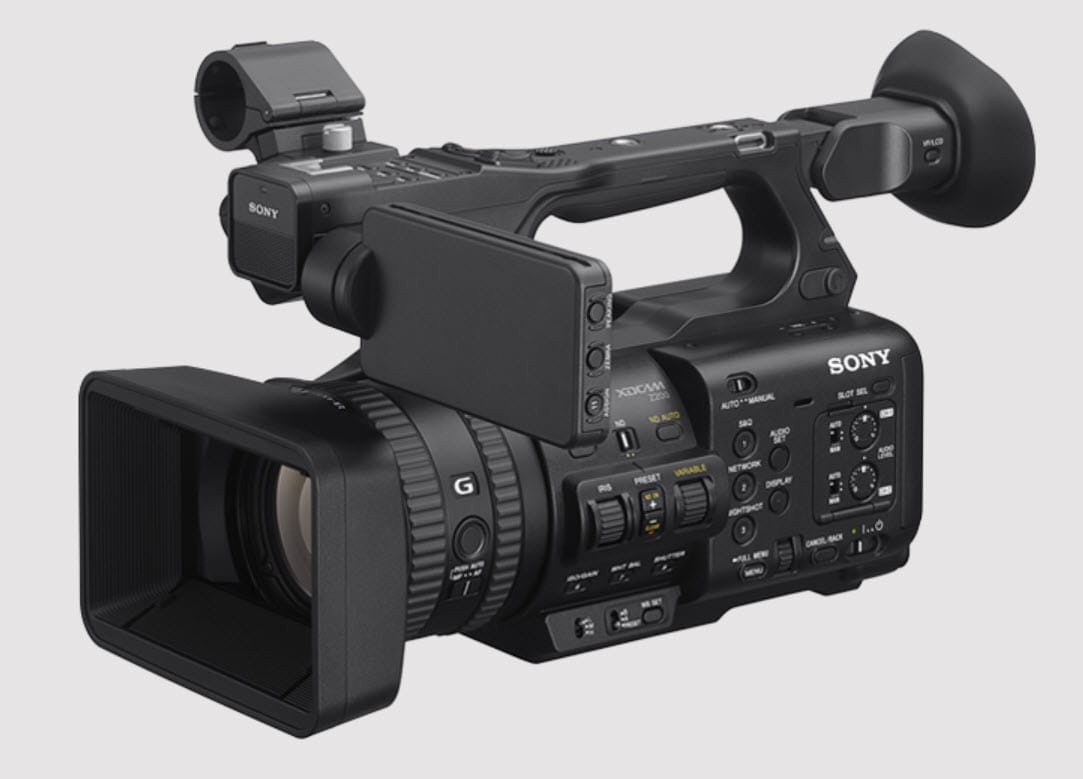
Summary:
- Price: ~$6,000
- Sensor: 1.0-type Exmor RS CMOS
- Video: 4K/120p HDR
- Clean HDMI: Yes (alongside 12G-SDI output)
- Type: Camcorder
- Pros: Professional-grade video quality, advanced AF, built for broadcasting, clean video output
- Cons: Very expensive, overkill for casual users, steep learning curve
For the ultimate in video quality and features, the Sony PXW-Z200 is worth a lustful look. This professional-grade camcorder captures stunning 4K HDR footage at up to 120fps. With advanced features like AI-assisted autofocus and integrated Wi-Fi, it's perfect for high-end productions and broadcasts. The clean HDMI output, along with 12G-SDI, ensures compatibility with professional broadcasting equipment. This is only for those with very deep pockets, but if you have the budget, it's the pro choice!
What is Clean HDMI Output and Why Does It Matter?
Clean HDMI output means the camera can output a unaltered, high-definition version of what it's capturing through its HDMI port. That means without any overlays, data or graphics in the picture, as you'd normally see on the camera screen itself. This feature is a big boon for live streaming as it means you can use a capture card to grab that camera output direct, rather than mess around with often-unreliable or slow USB camera connections.
Why Clean HDMI Matters:
- Professional Appearance: Provides a distraction-free viewing experience.
- Equipment Compatibility: Essential when connecting to capture cards.
- Avoids USB Connections: Faster, higher quality and more reliable.
So, that raises another question - what's a capture card, and what's USB got to do with it?
How Do I Connect My DSLR to My Computer as a Webcam?
There are two primary methods to connect your DSLR as a webcam:
Method 1: Using HDMI with a Capture Card
- Connect your DSLR to an external capture card via an HDMI cable.
- Plug the capture card into your computer's USB port
- (I use the Elgato Camlink 4k)
- Ensure your camera is set to output clean HDMI.
- Select the capture card as your video source in streaming software (e.g., Zoom).
Method 2: Using USB Webcam Software
- Download the appropriate webcam utility software from your camera manufacturer (e.g., Canon EOS Webcam Utility).
- Connect your DSLR directly to your computer using a USB cable.
- Set your camera to movie mode.
- Select your camera as the video source in your conferencing app.
Both methods can enhance your streaming quality significantly compared to standard webcams. BUT, beware that direct camera-USB connections often come with limitations. For example, the aforementioned Canon EOS webcam utility does allow you to connect your Canon M50 as a webcam with a clean output, BUT the resolution is limited to 720p unless you pay a monthly fee for the pro version. And even then, there's an element of latency to the connection, just due to the limitations of USB2.0.
What is a Full-Frame System? Is It Worth It?
A full-frame camera features an image sensor that measures approximately 36mm x 24mm—equivalent to traditional 35mm film frames—allowing it to capture more light than crop sensors (like APS-C). This results in better low-light performance and greater detail.
Advantages of Full-Frame Cameras:
- Dynamic Range: Higher dynamic range allows better recovery of highlights and shadows.
- Low-Light Performance: Larger sensors gather more light; hence they perform better at higher ISOs.
- Wider Field of View: No crop factor means you can fully utilize wide-angle lenses (you can fit more of your studio in!)
- Shallower Depth of Field: Easier subject isolation due to less depth of field compared to crop sensors.
Disadvantages:
- Cost: Full-frame cameras are generally more expensive than their crop-sensor counterparts.
- Size & Weight: They tend to be bulkier due to larger sensors.
- Lens Compatibility: Requires investment in full-frame lenses for the best results, which can also be costly.
Basically, if you prioritize image quality—especially in low light—and plan on using wide-angle lenses frequently or require high-resolution images (for prints or large displays), investing in a full-frame system may be worth it. But, how much does that apply to streaming, YouTube or podcast recordings?
Well, to be fair, we often record in darker studios, but we should be doing so with good lighting. And it might be that you want to see more of a wide-screen view, fitting in more of the background. But generally you'll be able to find a good setup to allow for that even with a crop lens. So, all-in-all, I think it's probably not worth it for most streamers.
Could I Use My Smartphone as a Camera for Streaming?
Absolutely! Modern smartphones pack seriously impressive camera tech that can often outperform even a top-end webcam by a country mile. I've filmed a tonne of footage for our YouTube channel on my iPhone 14 Pro and it comes out really great quality.
While smartphones offer great convenience (you already own it!) and quality (often better than built-in webcams), they do have limitations, though. You'll have less control over settings than the dedicated cameras we've covered above, they may struggle in low light, and long recording sessions will drain your battery. That said, for most creators just starting out, your phone can be a brilliant option.
What Software Do I Need for Streaming?
You'll need streaming software to bring everything together, including your video feeds (camera, screencast, etc) and your audio input. OBS Studio (free) is an industry standard, though it's fairly techie, so has a bit of a learning curve. Streamlabs Desktop (free & paid options) is a good alternative, and more user-friendly for beginners. But, to get the most out of it you'll need a paid subscription.
How Do I Make Sure My Audio Quality Matches my Fancy new Camera?
There's nothing more jarring than watching a crystal-clear DSLR stream with audio that sounds like it was recorded in your toilet! I've seen this mistake time and again with creators we've worked with in our Academy. But trust me, viewers are much happier to tolerate average video with stellar audio than the other way around.
When you're using a DSLR or a mirrorless camera for streaming, it goes without saying that you're not using the in-built mic. Instead, invest in a dedicated USB microphone like the Samson Q2U (around £60/$80) or the Rode Podcaster ($190 - $350), if you have the budget. The difference is night and day – richer tones, clearer speech, and far less room echo. For interview shows where you have more than one speaker in the room, consider lavalier mics clipped to clothing for consistent levels regardless of head movement.
For a full guide to mics, check out this article on the best microphones on the market.
So What Camera Suits You?
Like I said, your choice of camera is definitely an it-depends type of question. But rest assured that you can get a huge image quality boost even just moving up to a budget DSLR or mirrorless system. From entry-level options like the Rebel SL3 to professional-grade models like the Sony PXW-Z200, there's something for everyone looking to enhance their content creation capabilities.
Remember that while having great equipment is important, it's your creativity and content that will truly set you apart in the world of online video. Happy recording!
